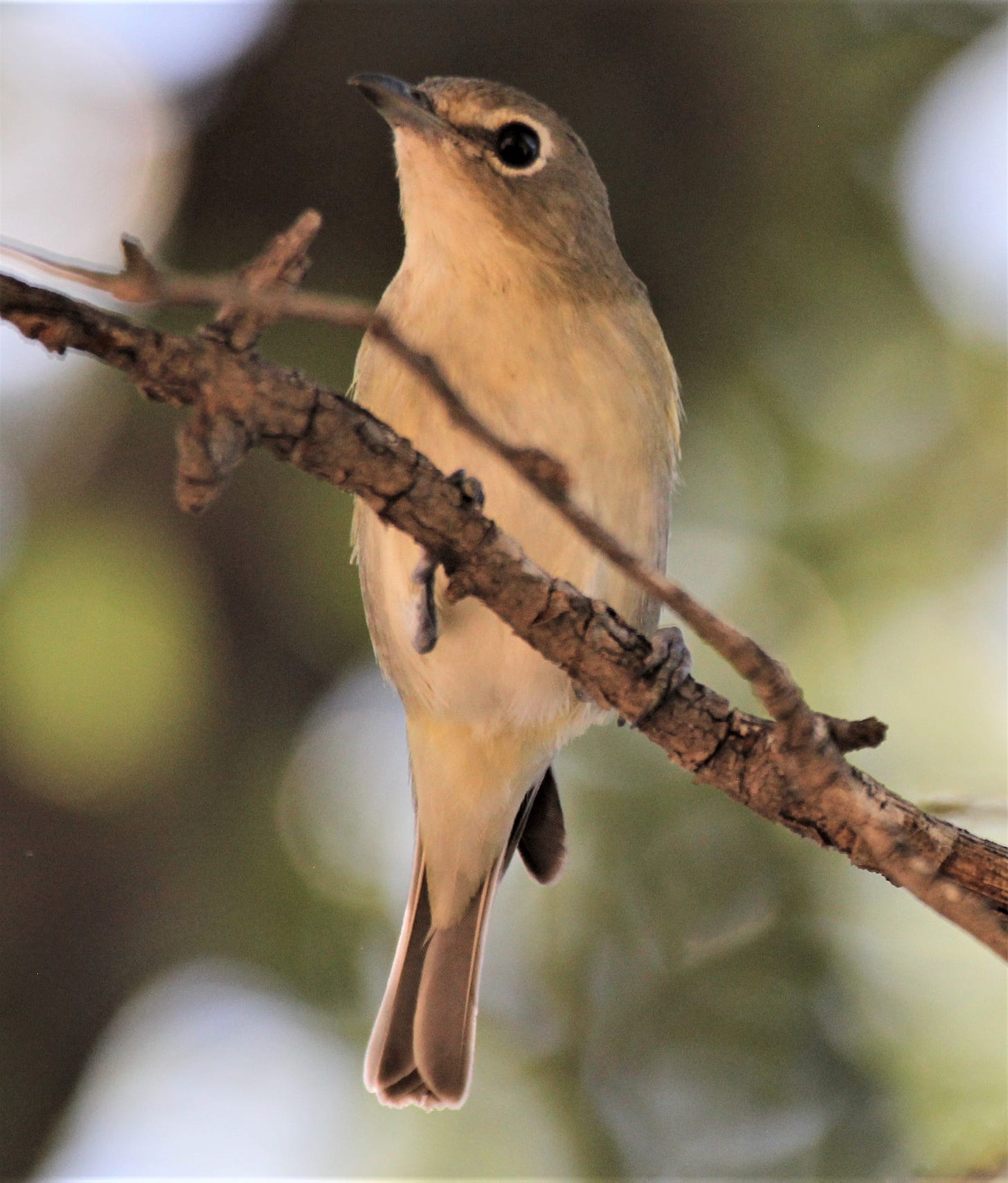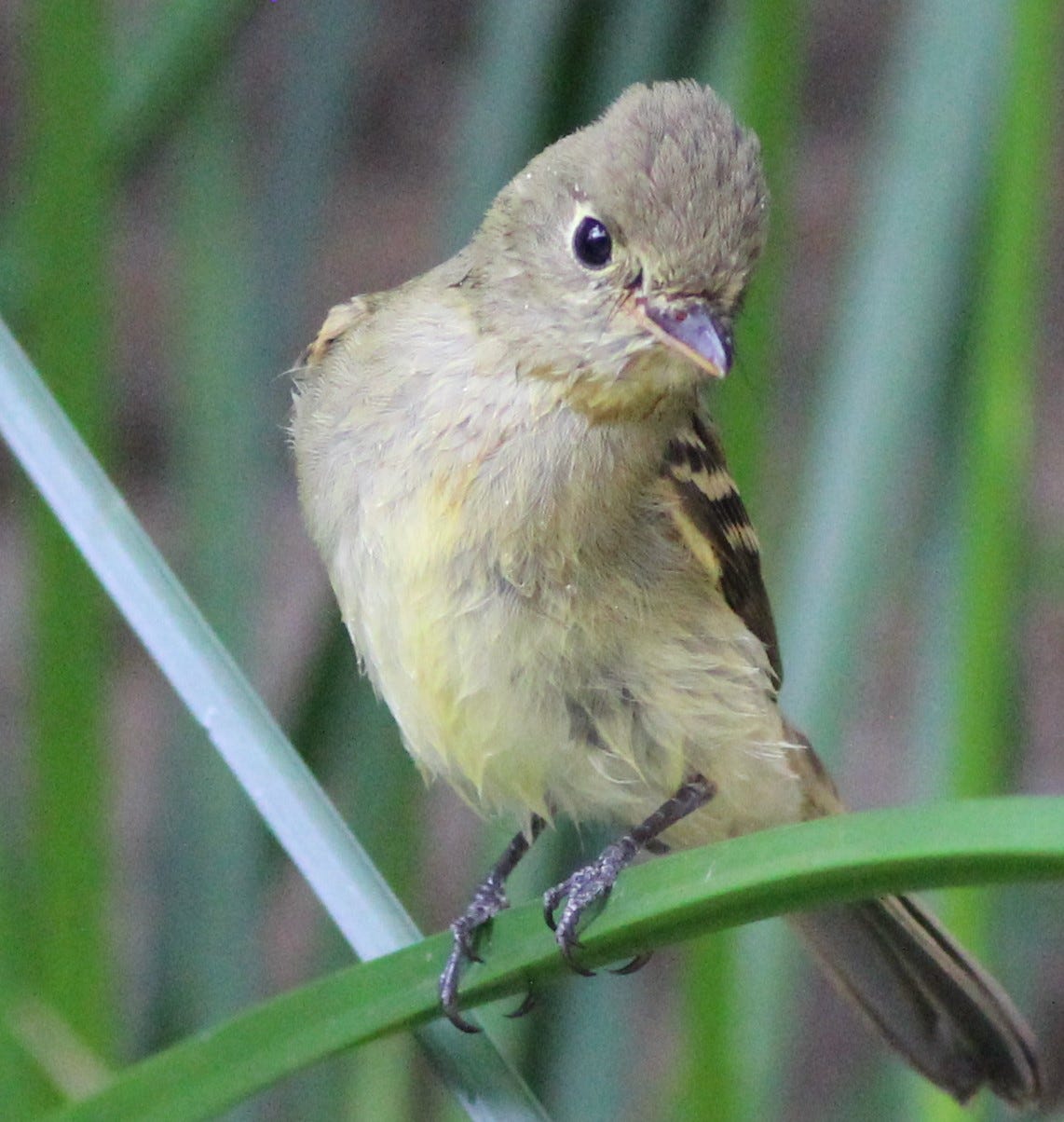
September 9, 2022
People sometimes ask me if I count the birds I only hear. Common poorwills, for example, which send out their plaintive two-note pleas for companionship all night, all summer. I listed one this morning, as I did in 2002 when I heard my first one in Skeleton Canyon. But I’ve never seen one.
Why limit birding to one sense when you have five?
It’s called bird “watching” but it isn’t only for the sighted. As I’ve mention before, a blind person can birdwatch. You don’t need $1500 Zeiss binoculars or Leica spotting scopes. You don’t need optics at all. You can enjoy birds by learning to identify them by their songs. Web resources like the Cornell Lab of Ornithology hold thousands of recordings of birds from around the planet.
So yes. I’m not sight biased. And, since I make my own rules, I’ll even count birds by smell.
Some birds are easier to identify by ear than by eye. Others are near impossible without hearing them. The past few weeks, I’ve struggled with the migration of juvenile rufous hummingbirds and the possibility of a rare Allen’s hummingbird lookalike showing up at the feeders along with them. Try photographing flared tail feathers in mid-flight and distinguishing between narrow and lanceolate and notched or unnotched R2s. Better just to listen.

Here are a few other lookalikes with distinctive voices that have recently graced the Big Yard:
The art of listening and the five senses of birdwatching. Start simply. Learn to recognize the moaning call of a Gambel’s quail whether or not you can’t see it. Still not sure? It tastes like chicken!
Thanks for subscribing! More birds and birdsong to come!









My ears runneth over. Thanks.
You would be very welcome!